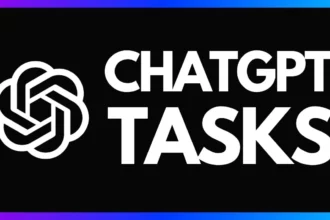Understanding API Automation Testing: Definition and Importance
Ah, API automation testing! It may sound like a complex topic that’s suited only for rocket scientists or those with extra labels after their names, but fear not! Think of it as the meticulous personal trainer for your software’s capabilities — helping to whip those APIs into tip-top shape.
So, what is API automation testing? In simple terms, it involves using technology to test the performance and functionality of APIs automatically. Picture a pensive delivering pizzas (that’s your API), who must ensure that every pizza arrives ready to eat. API testing checks if your delivery person delivers on time, with the right toppings (or data). If they accidentally leave out that juicy pepperoni (which would be a missing piece of information), well, we have a major problem!
To dive a little deeper, when we talk about API automation testing, it’s not just about making sure “the pizza” doesn’t get lost on its journey. There’s so much to unpack here. Imagine that these APIs need to handle various requests—think of customers ordering pizzas with unique toppings or weird dietary preferences. API testing sends these requests through rigorous checklists—from correctness to compatibility —making sure they can serve every quirky order without breaking a sweat. It’s like spoofing Aunt Betty’s allergies to see if her allergy-free stone fruit sorbet really works!
Now why is this process critical? Well, in today’s digital world where meteoric success often hinges on digital interaction, your software’s efficiency and reliability play pivotal roles. An API that functions inaccurately could mean financial losses or worse — reputation damage! If developers don’t run tests, due-to some oversights; data might go haywire leaving users frustrated faster than a toddler deprived of ice cream.
Could you imagine launching an app where nothing works because someone forgot to check if those fancily coded APIs are grooving together in unison? Horrors! That’s why enter stage left Talented Software Engineers waving tools like Postman and various scripting options—those helpers in the world of integration scenarios will foresee interoperability and performance mishaps beyond anyone’s wildest nightmares.
Factors such as validation, which checks whether the results you get from an API meet expectations; functional testing, ensuring the nuts and bolts work as intended; or even security testing having its place in this merry band of heroes—the array of examination methods available ensures that your APIs wear capes every day.
In essence, conducting effective API automation testing turns these interfaces from mere lines of code into reliable machines cranking out hot data deliveries right on time without embarrassing you at that all-important presentation to stakeholders!
So strap yourself in; understanding how deep the rabbit hole goes with these services will leave you tantalizingly aware of their importance across tech industries everywhere! Keep an eye peeled for the next sections—we’re just getting started unraveling more API mysteries and techniques for ensuring smooth operations for every application under our sun!
Table of Contents
ToggleKey Tools and Techniques for API Automation Testing
When it comes to API automation testing, having the right tools and techniques is like selecting the perfect ingredients for a gourmet meal. Without them, you risk serving up a bland, unsatisfying experience. Various tools exist that cater to different needs of API testing, enabling testers to create an efficient workflow with a dash of reliability. Fancy a few recommendations? Let’s dig in!
First up is the culinary superstar of the API testing world: Postman. Not only does it look sleek, but it also provides an intuitive interface that allows testers to build and run tests seamlessly. Think of it as your trusty sous-chef, ready to assist with everything from exploratory testing to scripting robust test cases. With support for multiple environments and easy collaboration features, it helps teams work together to ensure everything is seasoned just right!
Next on the menu is Rest-Assured, a popular choice among Java enthusiasts. This tool works wonders for users looking to integrate their API tests directly into the development stack through a familiar coding syntax. Rest-Assured is like your very own conductor, harmonizing all requests and validations to provide delightful harmony in your API responses. And don’t worry, it can hit all the right notes when paired with frameworks like JUnit or TestNG!
Now, let’s talk about SoapUI, which offers a generous helping of features for both functional and non-functional testing. Whether you’re testing APIs for performance or security, SoapUI has your back. Think of it as the versatile kitchen gadget that can do everything from baking to sautéing. You might even want to throw in some JMeter, which specializes in load testing, checking how well your API handles the pressure—perfect for when your digital restaurant gets really busy!
As we dig deeper into this culinary spread, we can’t forget about Apigee. This tool provides excellent API management alongside testing capabilities. With advanced analytics, it can serve insights about traffic patterns and performance. It’s like having a Michelin-starred food critic on retainer, offering feedback on how your API can keep serving up five-star experiences.
Don’t neglect the importance of automation frameworks like Katalon Studio, which allows for multi-tier testing from UI to API without breaking a sweat. Furthermore, the secret sauce in your automation recipe might just be the way you employ these tools in combination with techniques. For example, creating effective test scenarios that include parameterization lets you test various inputs, ensuring robustness under many conditions—think of it as tasting your dish with different spices until it’s just perfect.
Now let’s sprinkle in some vital testing techniques that will enhance your testing process. Consider Test-Driven Development (TDD); integrating tests early in your development cycle can save you from late-night panic attacks (trust me, nobody wants to code while caffeinated after midnight). You can also take advantage of Behavior-Driven Development (BDD) practices, which align development with business outcomes, ensuring that your API not only functions but meets end-user expectations as well. The delight of a smooth API integrated into a user journey is akin to that first bite of a perfectly baked soufflé!
So, armed with the right tools and techniques, you’re equipped to transform your API testing into a fine-dining experience rather than a fast-food pit stop. Bon appétit to all API testers—may your tests be flawless and your APIs be ever reliable!
Common API Automation Testing Scenarios and Examples
When it comes to Common API Automation Testing Scenarios, we’re diving into the delicious soup of possibilities. Think of API testing as a buffet where you can select various scenarios that challenge your API to perform like the superstar it was meant to be. Picture this as the “Iron Chef” of the coding world, where only the finest test cases earn a spot on the podium!
One frequent contender at this buffet is the connectivity test. This scenario checks whether the API takes the stage without awkward “umms” and “uhhs.” By sending requests to the API and validating its responses, you confirm that the API happily accepts connections without turning into a diva and throwing a fit. No lost connections here, folks!
Compatibility tests follow closely behind, ensuring the API can smoothly interface with various environments—like an expert in speed dating! This scenario examines how APIs behave when subjected to different versions of applications. Just like you want a compatible partner who likes the same pizza toppings, your API should work harmoniously whether it’s running on a new or vintage framework.
Next up is the functional test. This classic scenario acts as the flavor enhancer, checking that every API functionality is operating as intended. Imagine it as taste-testing every dish to confirm that the “chocolate lava cake” doesn’t turn out to be a mundane brownie batter! Test cases typically explore fields such as input/output validation and business logic to ensure the API does not confuse a vine-ripened tomato for a potato in a salad.
Then, of course, you have the compliance tests, which ensure the API meets all regulatory standards. Nobody wants a health inspector busting up their party, right? This scenario ensures your API is compliant with protocols that govern data integrity and security as it serves its users. Think of it as making sure your food truck gets all the right permits to serve that gourmet fare!
Now, let’s sprinkle in some dynamic data tests. These tests are akin to a food stylist adding the finishing touch to a plate—ensuring the API successfully processes data that changes in real-time. The challenge here? Inputs that could be as unpredictable as a toddler after a sugar rush! By simulating varied data conditions, your API must navigate twists and turns while consistently delivering correct outputs.
Last but not least, the performance tests come to the forefront. This scenario evaluates how well your API holds up under pressure, just like a pizza oven during rush hour. Performance tests assess latency, throughput, and response time, ensuring those pizzas get delivered quickly and without compromising quality. That’s what we call API agility!
By employing these diverse testing scenarios, you’ll channel your inner API sommelier—ensuring that your applications not only flow like the finest wine but also maintain the zest and flavor that keeps users coming back for more. So, grab your test scripts, gather your tools, and let the API automation festivities begin!





